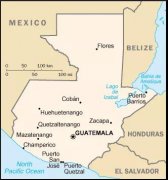What kind of coffee is Indian monsoon Maraba? introduction to the natural drying method of special sun in India

Professional coffee knowledge exchange more coffee bean information please follow the coffee workshop (Wechat official account cafe_style)
Indian coffee was brought into the establishment of the first coffee farm by pilgrims as early as the 16th century. You might not imagine that India produces much more coffee than Ethiopia and any Central American country. 900000 hectares of land grows coffee beans. There are about 140000 coffee farms in India. More than 90% of the farms are small-scale farming. These farms are distributed in the coastal mountains of 900-1200 meters to the south and east. Arabica accounts for two-thirds of the coffee varieties and the rest is Robsta, with a total output of 44-450000 bags, making it the fifth largest coffee producer in the world.
Wind-stained coffee is a new flavor created inadvertently. In the 17th and 18th centuries, India shipped coffee beans to Europe by sailboat, which took six months. The raw beans were placed on the bottom of the barn and absorbed the moisture and salty taste of the sea. The raw beans arrived in Europe and had deteriorated. The color changed from dark green to the yellowish brown of rice. The acidity of the coffee almost disappeared, but it unexpectedly developed a strong nutty and cereal flavor. It tasted full, with a bit of black rice tea flavor. Nordic people like this kind of golden alternative coffee very much. In 1869, the opening of the Suez Canal and the advent of steamships shortened the sailing time between India and Europe, but customers began to complain that Indian coffee was "tasteless", losing the charming yellow and nutty flavor of the past, and orders plummeted. Indian exporters began to study the solution.
The original coffee shipped to Europe took more than half of the time to become "transformed" and lost its original flavor, so exporters thought of the salty and wet environment blown by the Indian ocean along the coast of Malaba in southwestern India every year from late May to September. After several experiments, it was made similar to the old golden coffee without acid, so it was named "monsoon coffee", commonly known as wind-stained coffee. For hundreds of years, it has been widely used by European coffee manufacturers to prepare mixed coffee beans, which can increase the consistency and tea feel.
When it comes to Malabar, the most common wind stain in Indian coffee, the main reason is that in ancient times, coffee took months to arrive in Europe. During the voyage, due to exposure to salt-filled sea breeze and moisture, the coffee beans changed a special taste, and the original fresh dark green coffee beans also became yellowish brown with Mantenin. At that time, Europeans liked the rich thickness and peculiar flavor.
Export port
MANGALORE is the port of New Mangalore in India. It is located in the southwest of the Indian Peninsula, north of the mouth of the Gulpur River in Karnataka, northwest of Mengelor, facing the Arabian Sea.
The northeast bank of the MANGALORE waters is a bulk cargo terminal, which is used for groceries and is accessible by railway. Southwesterly winds are often blowing in summer, averaging force 5-6, and are also affected by tropical storms. Tide is a half-moon type, exporting minerals, pepper, coffee, sandalwood, cashew nuts, tea and so on. The original port about 2 nautical miles from Xingang to the south is small in scale and is mainly used for coastal trade and fishery. The port of Mengeluer is to the south, about 10 kilometers away from the new port and 6 kilometers away from the old port.
Special sun natural drying method: monsoon treatment, also known as wind stain treatment.
In May and June every year, the monsoon phenomenon occurs in southwestern India. Wind-stained coffee needs to be made with sun-cured beans. Coffee farmers bask the beans flat in the wind-stained factory, which is about 12-20 cm thick, and place them for five days. Rake these coffee beans again and again, so that all the coffee beans are exposed to the extremely humid air at that time, and then put the beans loosely in a bag and pile them up. So that the monsoon can blow through the bag.
The wind-stained plant faces to the west and welcomes the salty monsoon blowing from the southwest. The coffee beans are laid flat in the wind field, the windows are all open, and the monsoon humidity blowing from the Arabian coast in summer is very high, and the wind stains will return to the bag to a certain extent, but the coffee beans should not be too full, and the coffee bags should not be piled too dense so as not to be airtight and moldy. There these bags are restocked once a week for a total of 7 weeks, until the coffee beans change color and taste. Also from time to time to pour out coffee beans to replace sacks to avoid breeding mold, which is quite time-consuming and labor-consuming.
The weathering period is about 12 to 16 weeks, and after it is ripe, it has to be fumigated to drive out the weevil, and finally the beans are screened manually to pick out the failed beans that have not turned golden. Since June, after three to four months of wind stains, the volume of green coffee beans has doubled to double, the color has changed from green to golden yellow, the weight and density have decreased, the moisture content is about 13%, and the acidity of beans has also been reduced, resulting in significant changes in quality and quantity.
Finally, the unwind-stained beans or other sundries and defective beans are screened again to remove those Indian coffee beans that are not affected by the "monsoon", and then prepare for cup testing, grading, bagging, export, and so on. October to February of the following year is a good time to make "monsoon" coffee.
END
Important Notice :
前街咖啡 FrontStreet Coffee has moved to new addredd:
FrontStreet Coffee Address: 315,Donghua East Road,GuangZhou
Tel:020 38364473
- Prev

World Coffee Tour | Guatemala with charming smoky flavor
| planting history Guatemala is located in Central America, which has a unique geographical environment, which is linked to North America in the north and bordering South America in the south. Facing the Caribbean Sea and the Gulf of Mexico, the climate is relatively hot and humid, and it has always been an important coffee producing area in the world. Guatemala knew how to grow and drink coffee as early as 1747, and in 1750, the god Jesuit
- Next

Indian boutique Robusta Sun Coffee beans how to drink _ Azad Hind Manor Black Deer Coffee Story
Professional coffee knowledge exchange more coffee bean information please follow the coffee workshop (Wechat official account cafe_style) [country] Indian coffee [manor] Azad Hind [variety] Robsta sun treatment [roasting process S] shallow roast] Azad Hind is a t-field of coffee war 140 km2, sitting in the wind, such as liny answer is aimawft no
Related
- Does Rose Summer choose Blue, Green or Red? Detailed explanation of Rose Summer Coffee plots and Classification in Panamanian Jade Manor
- What is the difference between the origin, producing area, processing plant, cooperative and manor of coffee beans?
- How fine does the espresso powder fit? how to grind the espresso?
- Sca coffee roasting degree color card coffee roasting degree 8 roasting color values what do you mean?
- The practice of lattes: how to make lattes at home
- Introduction to Indonesian Fine Coffee beans-- Java Coffee producing area of Indonesian Arabica Coffee
- How much will the flavor of light and medium roasted rose summer be expressed? What baking level is rose summer suitable for?
- Introduction to the characteristics of washing, sun-drying or wet-planing coffee commonly used in Mantenin, Indonesia
- Price characteristics of Arabica Coffee Bean Starbucks introduction to Manning Coffee Bean Taste producing area Variety Manor
- What is the authentic Yega flavor? What are the flavor characteristics of the really excellent Yejasuffi coffee beans?

